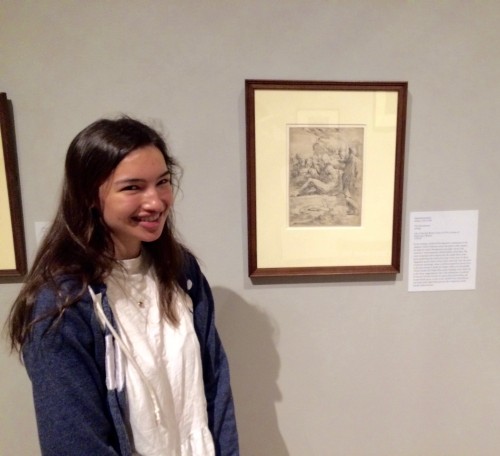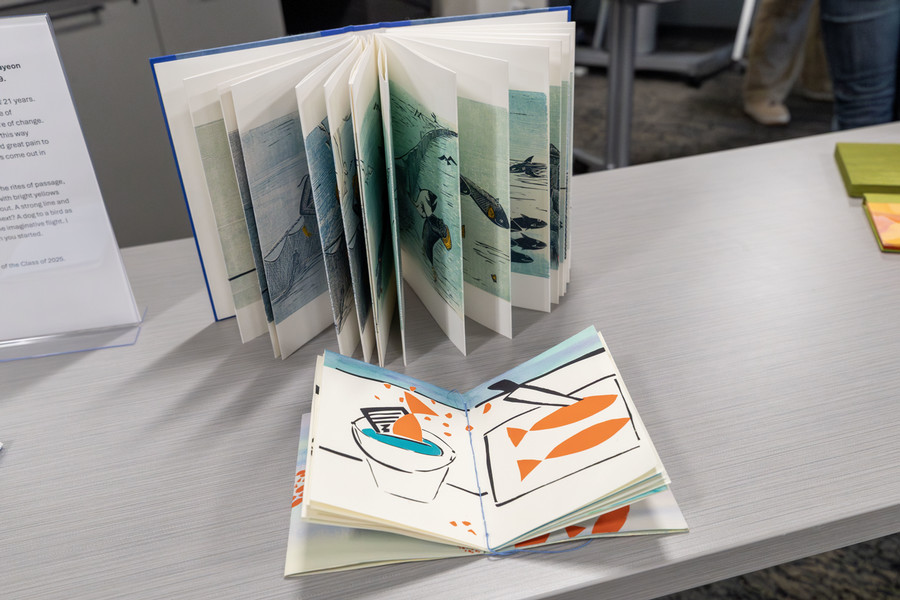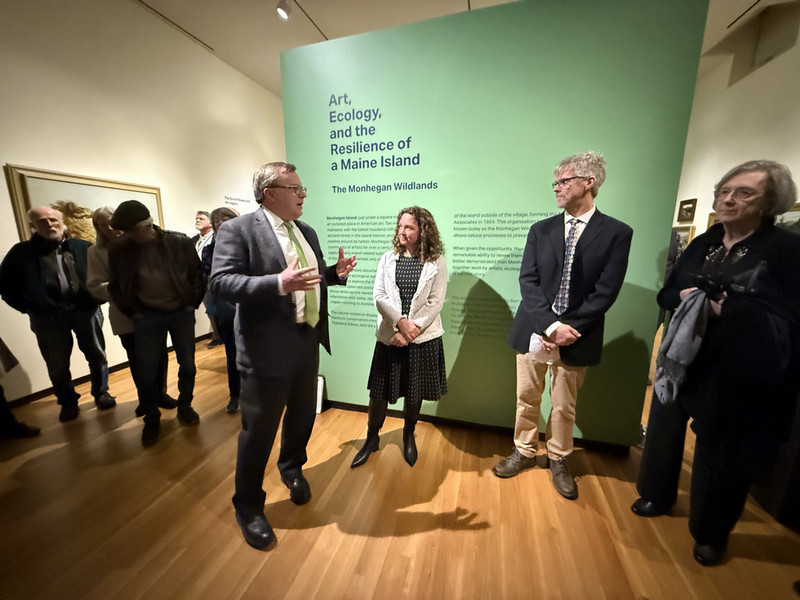Art History Students Lead Discussion of ‘Beautiful Monstrosities’
By Talia Cowen '16
Three students from Associate Professor of Art History Susan Wegner’s classes gathered last week for the Thursday Night Salon: “Beautiful Monstrosities, Elegant Distortians to lead that discussion on the works in the exhibit.
Two of the three students who led the Salon, Clay Starr ’19, Phoebe Zipper ’19, had been in Wegner’s spring semester class on Mannerism. Both had written papers for her class about works similar to those in the exhibition.
For the class, Zipper had written an essay on a painting by Italian artist Parmigianno, and she said Wegner asked her to discuss an etching in the exhibition by the same artist titled The Entombment. The etching, she noted, “shows the same figural type as his painting,” and added that the way Parmigianno “crowds all his figures in the image conveys the sadness of the scene.”
Starr spoke on an engraving entitled David Cutting Off The Head of Goliath by Giovanni Battista Scultori. “I love this piece because the scene is so fantastic and so full of motion, but there are also very small, subtle details hidden in the composition. The work is just full of layers, and the more I look at it, the more I see,” she said.
With some additional reading and research and a closer look at the workds, Starr says “Preparing [for the Salon] was easy with Professor Wegner’s help.”
Logan House ’17 was the third student to talk at the exhibit. While he was not part of the Mannerism class that helped curate the exhibit, he was a student in another of Wegner’s classes, the Art of Venice.
As a visual arts major, House said he came at the exhibit from a different perspective, that of “somebody interested in how the work was made and the technique behind it.” For this reason, he said his favorite work in the exhibit was the Pieta, where he says the he was impressed how the “artist was able to capture so much organic tone and value through the skillful use of intersecting straight lines.”
While the students leading the discussion had been exposed to a whole semester of discussion and deep thinking about works like those in the exhibit, they all noted how enriching the experience at the salon was. “It was cool to take stuff out of the classroom and actually be in a museum,” said Zipper.
Starr, whose first “in-depth exposure to art in general” was Wegner’s class, said, “It was great to see how many people from Bowdoin and Brunswick came. It was humbling to be among people who knew so much about art, and even more humbling to speak in front of them.”



